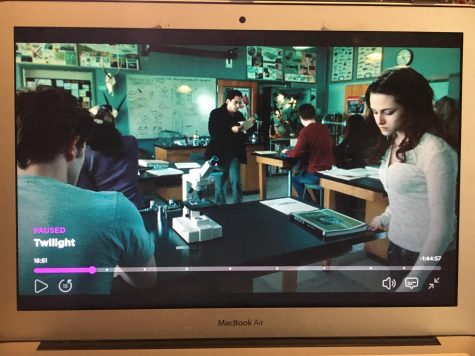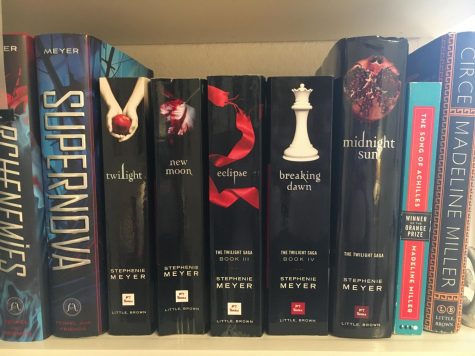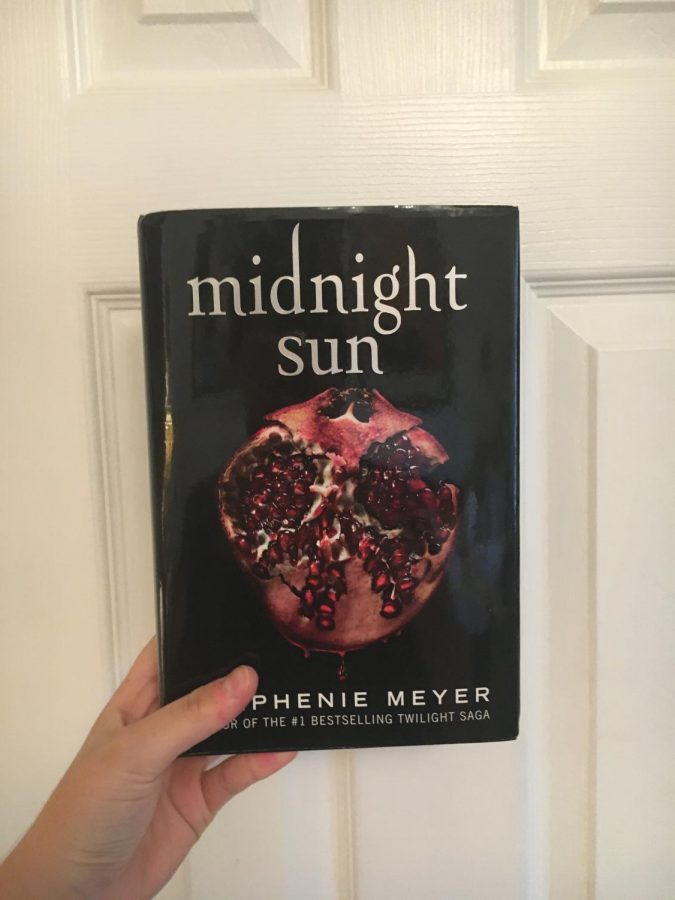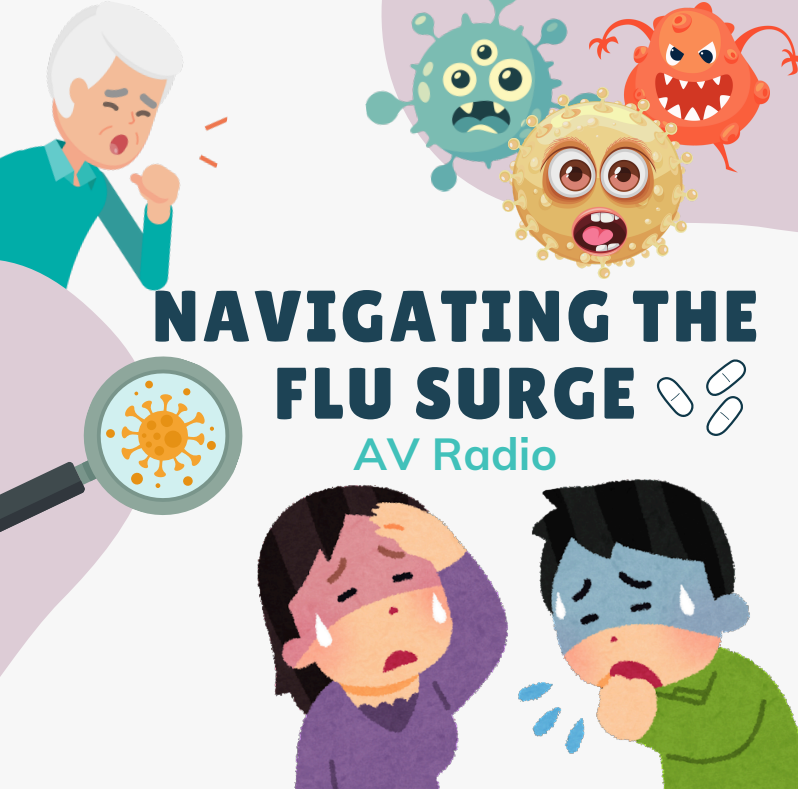Book Review: ‘Midnight Sun’
The cover of Midnight Sun, book five of the Twilight Saga.
August 17, 2020
On August 4, 2020, Stephanie Meyer released a new installment in the Twilight Saga—for the first time since 2011. The new novel, Midnight Sun, was met with curiosity from fans and critics alike, and received generally positive feedback.
Whether or not you’re a Twilight fan, you’re probably familiar with the concept: seventeen-year-old Bella Swan moves to the small town of Forks, Washington, only to discover that her new home is full of supernatural creatures—including Edward Cullen, the mysterious, brooding vampire whose humanity wars with his unquenchable thirst for Bella’s blood.
Love it or hate it, the Twilight Saga has sold over 160 million copies worldwide, and the movie adaptations made 3.3 billion dollars combined. It is one of the most famous teen novels of the 21st century and it inspired a new era of paranormal romance in young adult literature.
It’s no surprise, then, that Midnight Sun’s release created quite a stir. The novel recounts the first Twilight book from Edward’s point of view and casts new light on the series as a whole.
I admit it: I’m a shameless Twilight fan. My enjoyment of the series is unironic and completely genuine, and I’ve read New Moon more times than I’d care to admit. I was ridiculously excited to get my hands on a copy of Midnight Sun.
I was not disappointed. Midnight Sun has all the drama, angst, and romance that made the Twilight Saga so successful, but it has a decidedly darker turn than the original novels. As it is told from Edward’s point of view, the reader is up close and personal with the vampire’s murderous urges. It also sheds new light on Cullen family dynamics and behind-the-scenes knowledge that Bella was unaware of.
One of my favorite things about Midnight Sun was how it transformed Bella’s character. Over the years, Bella has been criticized by many for being bland, boring, and unremarkable—especially in the movie adaptations, where Kristen Stewart’s performance has been torn apart by critics of the series. Seeing her through Edward’s eyes, however, it’s much easier to understand how an immortal, inhumanly beautiful vampire could fall so madly in love with her.
Over the course of the book, Bella is shown to be snappy, witty, opinionated, strong-willed, and spunky. Some of her more annoying flaws—such as being clumsy to the point of ridiculousness—are still present; however, she is shown to have much more personality when viewed from someone else’s eyes.
Edward’s character also got a bit of a reboot. His boring, goody-two-shoes persona is stripped away, and we get to see the dangerous sides of him that Bella largely ignored. For example, the first time he sees Bella, he spends about an hour contemplating ways to kill her and drink her blood. (Creepy, right?)

It’s obvious why Stephanie Meyer didn’t include this detail in the original series—it’s a weird, off-putting way to start a love story—but it sheds light on some of Edward’s actions: why he tries so hard to stay away from Bella, why he’s always on his guard around her, and why he constantly refers to himself as a monster.
In every scene of Midnight Sun, Edward struggles to contain his murderous instincts. This glimpse into the thoughts of a hundred-year-old killer as he grapples with his feelings for Bella makes the story feel less PG. However, his guilt and determination not to hurt anyone keep him from seeming unsympathetic. It’s a hard line to walk, but I felt that Midnight Sun did it successfully.
One criticism I had of Midnight Sun was its treatment of Rosalie Hale, Edward’s adopted sister. Rosalie is arguably the most complex Cullen: she resents being a vampire and craves her old human life. She is cruel, manipulative, and vengeful, but she shows incredible control of her thirst.
I would’ve liked to see Rosalie’s character expanded upon in Midnight Sun; given Edward’s ability to hear thoughts, a novel from his point of view offers a unique opportunity to build upon the petty, vindictive shell we’re introduced to in Twilight.
However, Stephanie Meyer does just the opposite, characterizing Rosalie as even more vain, vapid, and self-absorbed than ever. Instead of seizing the opportunity to build a complex, bloodthirsty female character inside her somewhat one-dimensional world, she fits Rosalie into yet another box: the shallow mean girl who cares only about herself.
As for the writing of the book itself, it’s a mixed bag for me. The prose was more dynamic and developed than that of the original Twilight Saga. It’s also broody, angsty, and overdramatic. I happen to think that’s part of the appeal of Twilight, but it’s definitely an acquired taste.

The book was also extremely narrative-heavy. Edward proves to be an extremely long-winded narrator, and there are pages where no dialogue or plot development took place. The book definitely didn’t have to be 657 pages.
All in all, Midnight Sun is a flawed but fun read that improves upon its source material. If you’re a fan of paranormal romance, broody teenagers, or the original Twilight Saga, you’ll probably like this read. But if you’re part of the majority of people who criticizes Twilight’s (admittedly) overdramatic delivery, don’t add Midnight Sun to your TBR.
But hey, at least it’s better than the movies.






